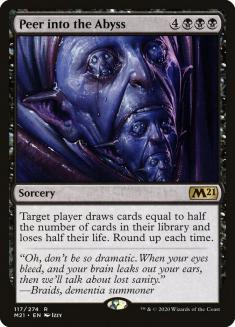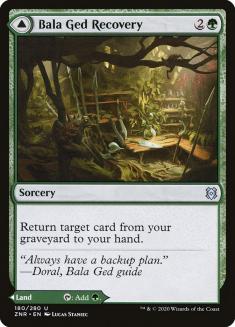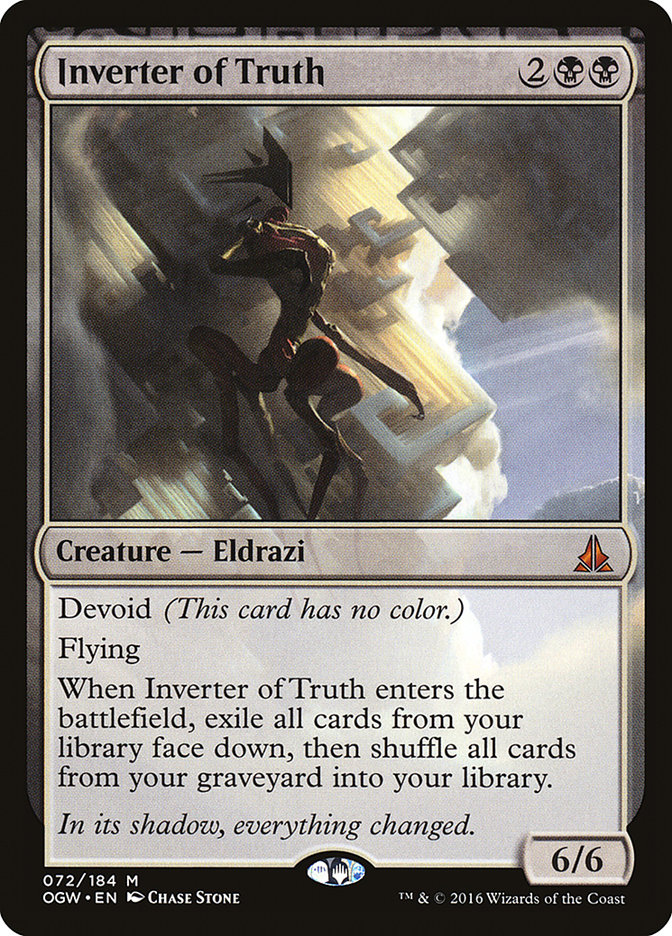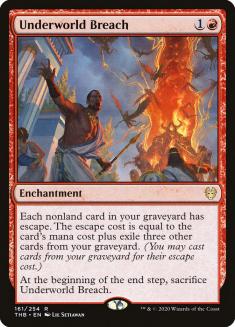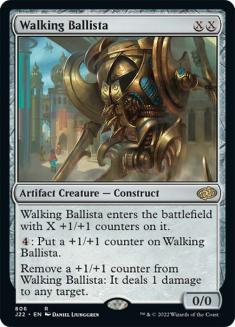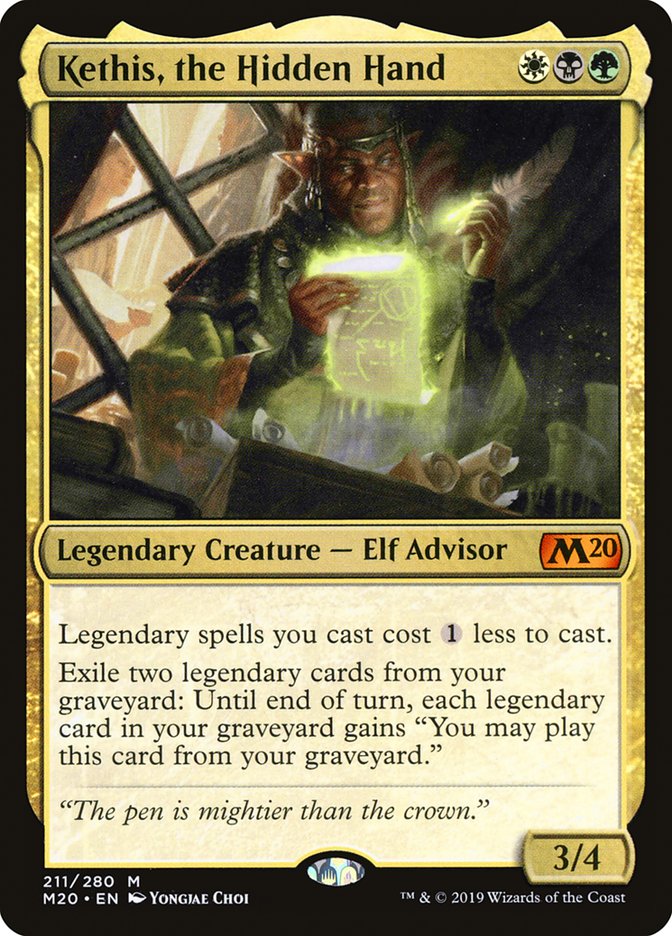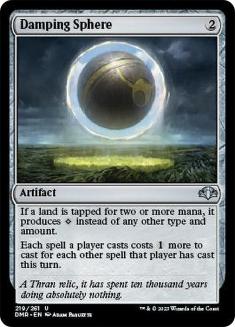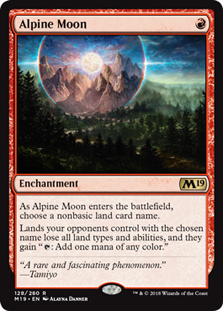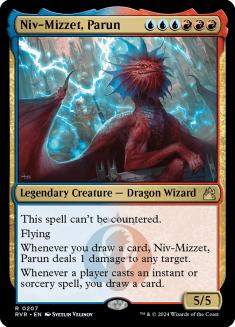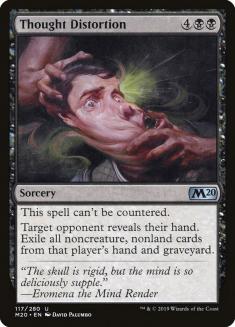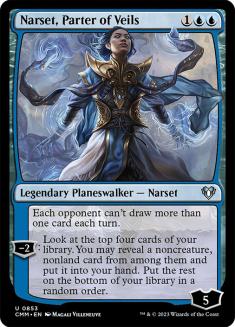Who is Pioneer for?
It’s hard to believe the format is less than a year old and harder to recognize the format we were so excited to sink our teeth into for the SCG Tour Season Two Invitational at SCG CON Winter last year. With so little time to settle, Pioneer was never able to develop a coherent, official mission statement — the closest thing came after the latest round of bans in a desperate attempt to breathe new life into a stagnant format:
Although we continue to see many different decks have success in Pioneer, and no decks with problematic win rates against the field, we do see that combo decks as a group make up a large portion of the competitive metagame. We’ve heard feedback that the frequency at which one finds themselves facing an opposing combo deck restricts deck-building options and can make play experiences unenjoyable. While win rate data may not point to change being needed, a different, more important set of data does: player participation.
While the reduction in tabletop tournaments due to the need for social distancing shortly after Pioneer’s launch earlier this year is certainly a factor, we’ve also seen a decline in Pioneer play rates on Magic Online throughout the course of the year. It’s clear that many players who have been, or could be, interested in Pioneer are ready for a change. Ultimately, how much fun players are having with the environment is the most important driving force behind B&R updates, and so we’re choosing to ban four cards to shake things up and push the competitive metagame away from combo decks.
Ian Duke goes on to explain why WotC decided to remove Dimir Inverter completely rather than preserving the possibility of a more manageable version without Thassa’s Oracle or Dig Through Time. If they hoped to afflict the same fate on Lotus Field Combo, last weekend’s Pioneer Showcase results on Magic Online are a terrifying omen:
Creatures (14)
Lands (22)
Spells (24)

Creatures (14)
Lands (22)
Spells (24)

If you struggle to see this as a metagame “push[ed] away from combo decks”, you’re not alone. If you saw this coming, you’re not alone either. Ben Friedman was quick to argue back in August that the Underworld Breach ban was no fatal blow for the deck. Ari Lax not only explained why Lotus Breach was so powerful but realized the archetype’s potential before Underworld Breach even existed (both guides are still useful for understanding the deck’s basic operations).
Friedman’s piece, less than two months ago, is already a glimpse of a different world — the deck itself has changed and so has its competition:
Without the deterministic wins promised by Underworld Breach, Lotus Field Combo is in search of a new way to convert a big burst of mana from its namesake into an immediate payoff. The remaining copies of Dig Through Time are automatic — it’s perfect card selection especially for a combo deck, works well at every stage of development, somehow easier to cast when your resources are under attack, and no longer clashes with the ideal payoff in Underworld Breach — but these become even better when you have another high-impact target to dig for. There was no obvious candidate for this role until Core Set 2021 offered up Peer into the Abyss, an incredibly powerful tool earmarked for combo decks, though few of them can be configured to use it.
Seven mana is relatively cheap by Lotus Field Combo’s warped standards and casting it with just two mana to spare lets you chain together the Hidden Strings and Viziers of Tumbling Sands you’re sure to pick up to build towards your big finish. The life loss here scales differently from a card like Ad Nauseam, which is meaningfully more difficult to use against aggro (unless you’re against the rare aggro deck with reach in Pioneer, two life is the same as twenty for Peer’s sake). Peer has replaced the Doublecasts that were briefly popular in pre- and post-Underworld Breach lists, resulting in less reliable mana generation but a better reward for it that doesn’t rely on having another relevant card to copy.
Bala Ged Recovery gives a deck that needs to hit land drops for Lotus Field but can’t afford to chip away at its spell count a way to have the best of both worlds — notably, rebuying Hidden Strings mid-combo still nets mana with two Lotus Fields. The double-faced cards are awkward with Arboreal Grazer as they can’t cast it on Turn 1 (other than Turntimber Symbiosis, which has no other applications for the deck and is worse than a regular land) and can’t be parachuted in with it, excluding them from the Turn 2 Lotus Field sequences that enable the deck’s fastest starts. Nevertheless, this utility earns a spot for Bala Ged Recovery and consideration for its siblings, Silundi Vision as further redundancy or Sea Gate Restoration as a way to peer into the abyss without it peering back at you.
These additions helped Lotus Breach to rebound from the loss of a key card. But before assessing its current position, it’s worth asking how it survived at all.
The muddled reasoning used to justify this round of bans lumped its targets together as four sides of the same misshapen coin. Though all these decks — Dimir Inverter, Lotus Breach, Mono-White Devotion, and Kethis Combo — fall under the broad umbrella of ‘combo,’ applying the same label to all of them is highly reductive. Dimir Inverter was a combo-control deck with excellent raw card quality that could win without Inverter of Truth or by using it as ‘just’ an undercosted finisher; Mono-White Devotion was primarily a midrange deck that won most of its games without its combo. Attacking these decks by disabling the combo with cards like Infinite Obliteration or Lost Legacy was a common but costly mistake.
By contrast, Lotus Breach had to find Lotus Field to accomplish anything and narrow hate aimed at stopping that was the best — often, the only — way to compete in the matchup. Duke’s article mentions the ‘Underworld Breach deck’ — with the implication that Breach was the critical engine card and banning it would delete any trace of the deck from Pioneer — rather than a Lotus Field deck built to unlock Underworld Breach’s tremendous potential. As a result, bans aimed at removing combo from the format preserved the most dedicated ‘combo’ deck while striking down the rest of its heavyweight class.
This is more than a pedantic, historical grievance; it helps to explain why Lotus Field Combo is flourishing even in this weaker form. If these hybrid combo decks were also highly susceptible to hate, this would create greater competition for the slots players could afford to devote to narrow sideboard cards: anti-Inverter cards would fight for space with the anti-Devotion and anti-Breach cards. This would force the format into a game theory problem without much replay value where your toughest task is correctly guessing which combo deck to prepare for or play on a given weekend.
Instead, the fact that there’s no one easy trick to beating Dimir Inverter or Mono-White Devotion meant that you showed up for those matchups with broadly useful tools and therefore had more room to deal with fewer linear decks (Lotus Breach first and foremost among them). Your Mono-White Devotion deck was weak against Lotus Breach unless you brought a stack of Damping Spheres, but if your other popular matchups were already accounted for, why wouldn’t you?
Dimir Inverter presented a tough challenge for Lotus Breach, threatening disruption on all fronts via discard and counters as well as fast combo kills to minimize the window of recovery from that disruption. The most common sideboard cards for the Dimir Inverter mirror, Mystical Dispute and Narset, Parter of Veils, were conveniently excellent against Lotus Breach. Dimir Inverter was also better at finding and protecting a hate card like Damping Sphere than any other deck in Pioneer. Although the loss of Underworld Breach was a severe blow, the removal of its scariest opponent and weakening of larger structural factors that kept the deck in check was a fine tradeoff.
The absurd specificity of the hate cards needed to fight Lotus Field Combo is a strong argument in its favour and raises questions about its namesake’s design. Land destruction effects peaked with Alpha and have only weakened since — seventeen years of Modern sets gets you Molten Rain (Pillage wasn’t in the format until Modern Horizons!) and even that’s too rich for Pioneer’s blood. This is unequivocally a good thing but places limits on what lands should be capable of in these younger formats; if Field of the Dead and any efficient answers to it are both miserable to play against, bans become the only way out.
The level of investment that Lotus Field demands polarizes this dynamic even further. If it didn’t have hexproof it would be unplayable in the face of Pioneer’s completely tame land destruction like Field of Ruin but, as a land with hexproof, it is literally the hardest card to answer in the entire format. The only ways to neuter Lotus Field are very narrow cards like Damping Sphere and Alpine Moon, making it hard to justify playing too many even if Lotus Field Combo is currently popular and creating dull binaries in deckbuilding and gameplay — “Did I/they include or draw Damping Sphere?” isn’t a fun or deep question from either side, even if you’re more combo-friendly than the players who supposedly quit Pioneer in droves at the sight of a Thassa’s Oracle.
With the Dimir Inverter menace gone, new stars from Zendikar Rising have a chance to shine. Other decks from this Pioneer Showcase follow a formula that already feels old:
Creatures (6)
Planeswalkers (3)
Lands (29)
Spells (22)

Creatures (13)
Planeswalkers (3)
Lands (30)
Spells (14)

Omnath, Locus of Creation joins Uro, Titan of Nature’s Wrath as a cautionary tale: if a card does basically everything, and does all of it well, where’s the counterplay? ‘Pure’ combo like Lotus Field Combo offers an answer not seen in Standard — the opponent can gain as much life, draw as many cards, or generate as much mana as they want, but unless they can win immediately or change the basic terms of engagement they will still lose.
Dimir Inverter’s dual strength as the best interactive deck and the best deck at winning through unconventional means allowed it to fill this role in the format (if it were still around, Omnath’s creativity would be stifled). The Four-Colour Ramp shell has a single-minded focus on its main gameplan and can spare only a few slots for interaction that Lotus Field Combo can shrug off while executing its own plan more quickly and consistently.
Four-Colour Reclamation puts up a stronger fight with maindeck Mystical Dispute as well as Dovin’s Veto, but a draw without reactive elements is likely to be too slow, while a draw that’s too reactive is inevitably overwhelmed by uncounterable threats like Niv-Mizzet, Parun and Thought Distortion.
If aggro is the answer to Lotus Field Combo, the Top 8 that Mullaly won offers several options:
Creatures (34)
- 4 Boros Elite
- 4 Soldier of the Pantheon
- 2 Kytheon, Hero of Akros
- 4 Thraben Inspector
- 4 Thalia's Lieutenant
- 4 Dauntless Bodyguard
- 4 Venerated Loxodon
- 2 Giant Killer
- 3 General Kudro of Drannith
- 3 Luminarch Aspirant
Lands (19)
Spells (7)

Creatures (27)
- 4 Bloodsoaked Champion
- 4 Scrapheap Scrounger
- 4 Dread Wanderer
- 3 Spawn of Mayhem
- 4 Knight of the Ebon Legion
- 4 Rankle, Master of Pranks
- 4 Murderous Rider
Lands (24)
Spells (9)

Mullaly is surely aware of Mono-Black Aggro, a fixture of Magic Online events largely thanks to Pioneer power couple Thiago Saporito and Linda Mahzinha, but Orzhov Humans is a new arrival poised to exploit this perception that aggro is trending down in the format. This list can flood the battlefield with cheap bodies while growing them to impressive sizes with its tribal pump effects or Venerated Loxodon and breaking open stalled games with Brave the Elements. The more proven Mono-Black Aggro shell sacrifices some of this speed for the format’s best interaction alongside a clean, flood-proof manabase.
While this is a potent recipe against many decks, Lotus Field Combo is accidentally and depressingly strong against Bloodsoaked Champion and Soldier of the Pantheon thanks to Arboreal Grazer and Fae of Wishes — holding off Rankle, Master of Pranks with your main combo payoff that just happens to be a four-toughness flyer is a great practical joke. This illustrates an issue with discussing matchups for this type of combo deck — the answer has more to do with how prepared the aggro deck can afford to be than anything about the fundamentals of the matchup. Even the most motley crew will get the job done against a Lotus Field Combo draw locked under a Damping Sphere.
If aggression is the key, an aggro deck that preys on other aggro decks is a great place to be. A familiar face from this Top 8 fits the bill:
Creatures (17)
- 2 Favored Hoplite
- 4 Sram, Senior Edificer
- 3 Stonecoil Serpent
- 4 Alseid of Life's Bounty
- 4 Hateful Eidolon
Lands (18)
Spells (25)

Creatures (17)
- 1 Soldier of the Pantheon
- 4 Sram, Senior Edificer
- 4 Stonecoil Serpent
- 4 Alseid of Life's Bounty
- 4 Hateful Eidolon
Lands (19)
Spells (24)

Selesnya Auras gained traction recently as a response to the Omnath decks’ surprising weakness to large, evasive creatures; it’s no surprise that Orzhov Auras (Lurrus), the early deck to beat when companions ran amok, is making a return. If targeted removal lines up poorly against cheap and/or recursive creatures from other aggressive decks and is useless against other archetypes — not least Lotus Field Combo — this creates an opening for this style of aggro-combo deck.
Fortunately for our hero (and everyone else’s villain?), Orzhov Auras is less able to run its own disruption and hate cards or mulligan aggressively for them, as it requires specific pieces to further its own plan and is more likely to be stranded with an otherwise nonfunctional hand. Additionally, anti-hate measures like Blink of an Eye or Wilt are more broadly effective against a deck trying to load up Auras on one creature. This more linear approach to aggro also encourages players to move towards superweapons like Back to Nature or Barrier Breach that box out other narrow hate like Damping Sphere.
The true aggressive foil to Lotus Field Combo is red aggro, a realization that took Zach Kiihne to the Top 8 of Players Tour Phoenix. A fast clock with reach to go around blockers and access to hate cards like Eidolon of the Great Revel that also apply pressure is a nightmare — luckily, red aggro is mostly squeezed out by Orzhov or Selesnya Auras and Omnath + Uro decks making it much harder to count to twenty.
If you prefer decks on the slower side, looking beyond the Top 8 gives some cause for optimism:
Creatures (2)
Planeswalkers (10)
Lands (35)
Spells (33)

Creatures (3)
Planeswalkers (12)
Lands (34)
Spells (31)

Narset is the single most effective ‘normal’ card against Lotus Field Combo — a proactive tool that offers two shots at finding more action while disabling crucial combo pieces. It was somewhat hit-or-miss against Lotus Breach as there were several Underworld Breach loops that never had to draw additional cards, but this new iteration is much more reliant on Pore Over the Pages to churn through cards and Peer into the Abyss as a payoff.
The combination of discard, counters, pressure, and Narset that made Dimir Inverter so effective here is impossible to recreate completely but Esper Control makes a valiant effort. Unfortunately, it suffers from the classic control VS combo problem — half of your cards are aces, but the rest are blanks. Even when you get to cash in Fatal Push and Supreme Verdict for Mystical Dispute and Dovin’s Veto (and make up the numbers with some rather situational Aether Gusts), you’re still forced to leave in dead removal spells thanks to how the deck is constructed. Having endorsed the deck in the past, I’m somewhat hesitant to do so again despite its success here, as it’s deceptively alluring; it has the best interaction against anything but the most blanks against everything, tied together in a bloated list with a flimsy manabase.
Jeskai Lukka (Yorion) may be more promising and more polarizing. Against everything else, an early Agent (or two, or three…) is often lights out — I’ve found Jeskai Lukka to be excellent against Omnath decks of every stripe. Against Lotus Field Combo you quickly find that, when Agent of Treachery is weak because the game isn’t being fought on the battlefield, the deck doesn’t do much of anything. This reverses dramatically in sideboarding as you now get to cheat in Void Winnower, the most effective abnormal card against Lotus Field Combo, reducing their deck to a single Blast Zone and a stack of jokers. The name is deceiving here — Transmogrify is a significant upgrade to Lukka in matchups like this, as issuing that threat a turn earlier makes it much more tricky to play around.
Lotus Field Combo is here to stay — until they make good on their original intention and bring the axe down again. Knowing how to identify when it’s the best deck, and how to hit the ground running when it is, is a cheat code for success in Pioneer. Don’t let it go to waste!


